We have a Special Connection with Cetaceans
Whales and Dolphins have a special place in the human psyche. As the only member of the mammal family to have made a full time home in the Oceans, apart from the herbivorous and freshwater tolerant Manatee & Dugong, we are drawn to and maybe vicariously share in their glorious dominion of the Sea, even though we nearly wiped them out forever in recent living memory.
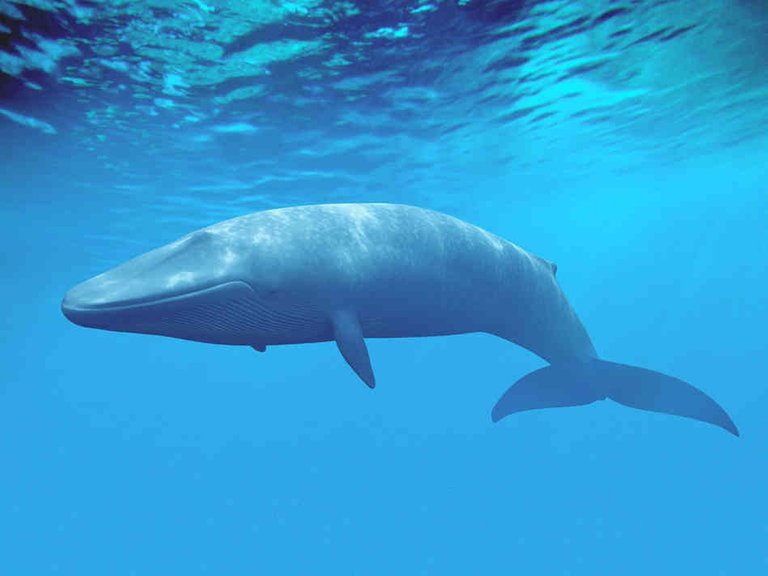
Blue Whale img src
The Blue Whale is the largest animal known to have ever lived on this planet and it's numbers are thought to have recovered to between ten & twenty thousand individuals globally, since the end of commercial whaling. Estimates before whaling commenced were two to three hundred thousand. The smallest Cetacean, the Vaquita (pronounced ba-kita) is currently down to about 12 individuals. It's almost impossible to think how their numbers can increase, with almost certain extinction imminent. Not to say that there aren't many extinct species of animals in the fossil record, including many species of Cetacean, but in the case of the Vaquitas' demise, it is intimately connected with human exploitation of the seas. The Vaquitas' home territory is a relatively small patch of about 900sq miles in the Gulf of Mexico and this is also home to a fish with a highly prized swim bladder, the Totoaba.
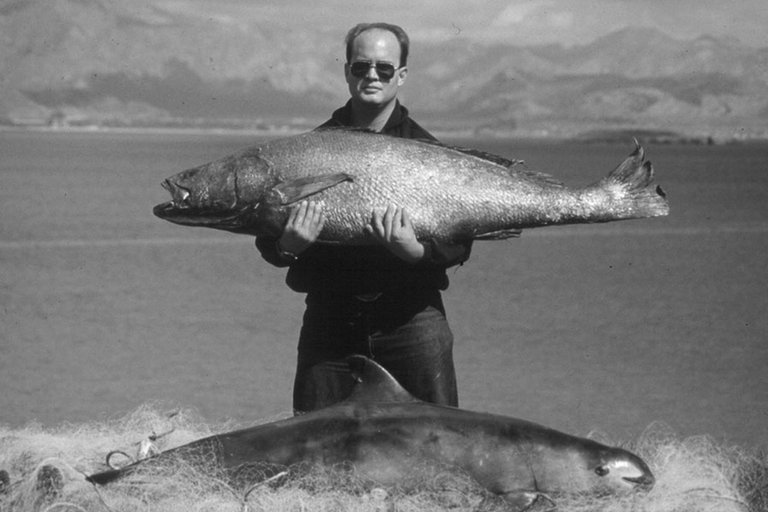
Totoaba & Vaquita with gillnet by Omar Vidal img src
In China this inauspicious organ can command up to $100,000 per kilo and so the Vaquita's home is strewn with Gill Nets in order to catch as many Totoaba as possible. Gill nets which trap fish by the gill & / or fins as they inadvertently swim through them, cause one of the worst most deadly and inhumane assaults on nature and one of the worst type of fishing humans can inflict on the Oceans, apart from bottom trawling which can permanently destroy an environment in one sweep . Not only are gill nets highly unselective, killing all manner of creature in slow, agonising, drowning deaths, they often become free floating and being made of plastic, will haunt the oceans for hundreds, perhaps thousands of years to come, causing untold deaths in the process. (all types of nylon netting adrift) injure, get wrapped around and exhaust animals, causing the slow death of many marine species including the mighty Whales as the nets slowly. The Vaquita may have been doomed as a species already, but it's now on the brink and the proliferation of gill nets in it's home habitat is a principle cause.
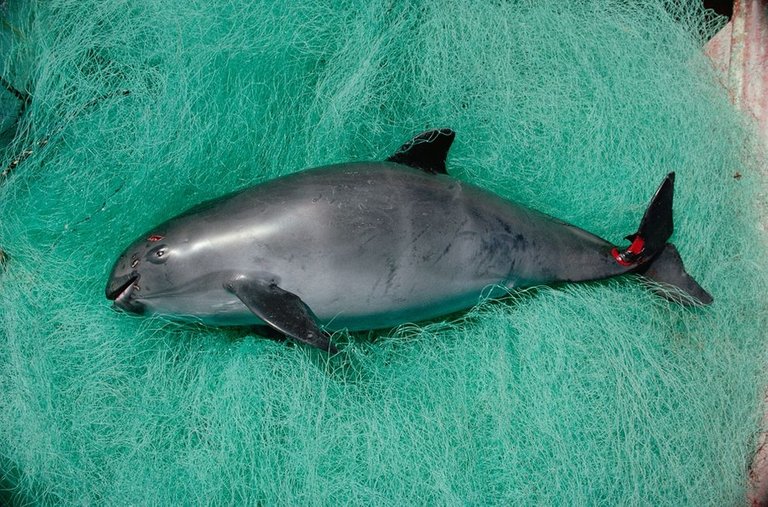
Vaquita Porpoise img src
The Industrial Revolution produced a human fever to track down and capture as many resources as possible and the Whale family suffered incredible levels of harm, many species neared the brink of extinction as we continued to hunt them with ever larger ships for their many body parts which were turned into a thousand consumer goods. Most highly prized was Whale oil, boiled down from Whales thick layer of insulating blubber (fat) and powered the industrial revolution until fossil fuel (coal, then petrol) replaced it. Even after that, whale oil was used for cooking and as a food processing ingredient, but also for oil powered heating and oil lamps in the days before electricity. The flexible, tough baleen of the Baleen Whales and their bones were used for products like umbrellas and corsets. Although not particularly prized, their meat was also consumed and often used as animal feed. The remainder of the bones was used as a fertiliser and although this all sounds a bit odd and old fashioned, commercial whaling was still in full swing before it was banned when I was a kid in the 80's. It's possible I ate whale as part of a cake as it was a commonly used ingredient in margarine ? WTF
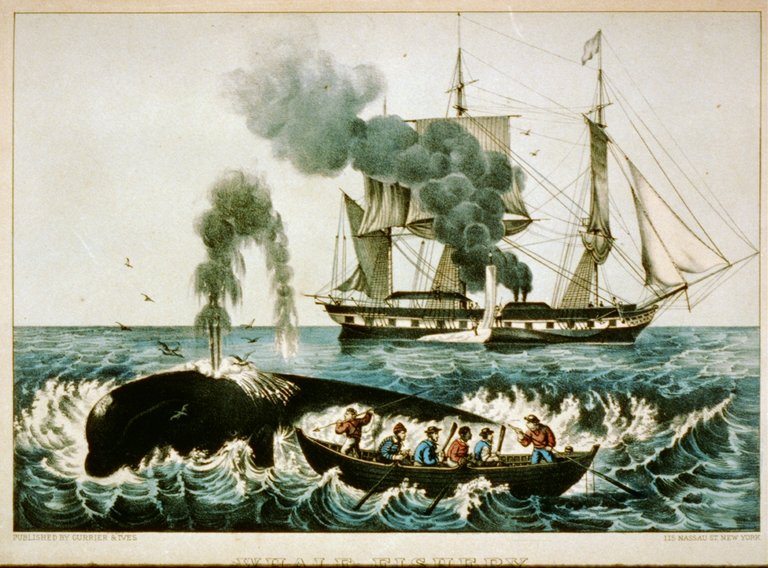
New England whaling ca. 1860: Whale Fishery - Attacking a Right Whale img src
The Story of the Gray Whale
Gray whales (Eschrichtius robustus) in the Atlantic Ocean were extinct by the 1700's due to human exploitation. They have not since returned. There are still surviving populations in the Eastern and Western Pacific. Migratory species, they travel along the shallow coastal waters where they are most vulnerable. The Pacific populations were also taken to the brink in the 1800's and early 20th Century and this majestic creature serves as a cautionary tale about how a vulnerable species can be threatened with continued exploitation. Gray Whales are bottom feeders and they dine on a wide variety of mud dwelling species. They tend to favour shallow waters where bottom diving is easy and they calf in lagoons. This made them an easy target for whaling ships and mothers would be cornered in lagoons, their calves suffering the same fates as their mothers. It is well documented and observed by hunters for thousands of years that to hunt pregnant mothers intentionally threatens to destroy the source of the bounty; The proverbial Golden Goose.
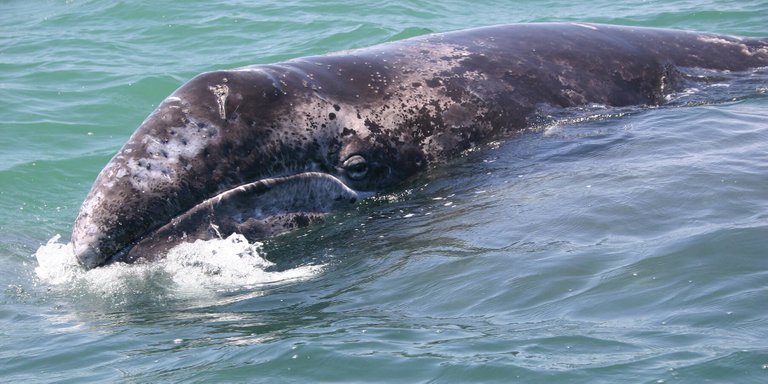
Gray whale img src
Whaling was eventually outlawed due to an international moratorium as recent as 1986 by the (IWC) International Whaling Commission, with the exception of provision for the low impact hunting of a few indigenous peoples who have relied on hunting whale for thousands of years including the Faroe Islanders, who have conducted an annual cull for many hundreds of years. In my opinion (and I have witnessed it) is a barbaric tradition of a drive hunt, where long finned Pilot Whales are driven into shallow harbours and the locals literally hack them to death in a frenzied bloodbath on the beaches with very large knives. They take about 800 animals annually. The Japanese unilaterally conduct a scientific Whale hunt each year, although opinion is divided about it's motivation and it is a source of great conflict between member states of the IWC. 300 Minke Whales are taken each year and this has apparently had a marked effect on their population numbers.
The Chinese River Dolphin, Lipotes vexillifer) known as Baiji
An expedition to locate these unusual looking freshwater Dolphins in 2006 proved fruitless. The Chinese River Dolphin has been declared functionally extinct. A combination of pollution and dam projects along the Yangtze River is thought to have had a profound effect upon their small numbers. I still like to think (in the most optimistic part of my mind) that a few of their dwindling number may have managed to escape extinction, traveling further upstream into distant tributaries where the water is untainted by industry and human habitation but it's a very long shot.
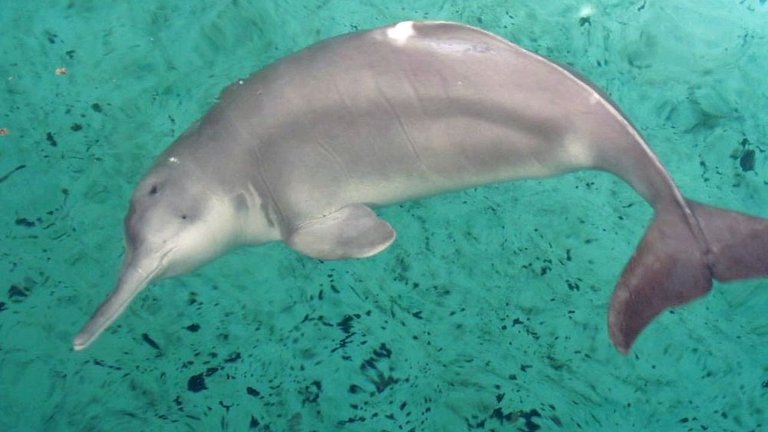
Chinese River Dolphin, Lipotes vexillifer img src
Is it Too Late for the Vaquita ?
A campaign was launched to save the species by tracking down and capturing animals from it's dwindling population. Some Cetaceans don't capture well and Vaquita was one of them. The plan was to pen them in the sea and then transfer to a specially built facility to attempt a captive breeding program. Bottlenose Dolphins breed in captivity but it wasn't long before the Vaquita showed signs of stress and then one abruptly died. The program was abandoned. It's only hope is through some advanced genetic re-animation in the future but unless it's habitat can be saved, it's a futile experiment. Captive bred animals often can't fend for themselves as they need to be taught sea craft survival skills by their peers. It's very sad. The smallest Cetacean is almost no longer the smallest Cetacean and is probably destined to join the ranks of the many extinct. 99.9% of all species that ever lived are extinct after all. The slim pickings which survive their descendants are getting smaller all the time. Soon it might just be humans, flies, rats and pigeons and while I have nothing against these noble emblems of proliferation, I'm also really fond of butterflies, frogs and the Vaquita Porpoise
wonderful pictures
Congratulations! This post has been upvoted from the communal account, @minnowsupport, by outerground from the Minnow Support Project. It's a witness project run by aggroed, ausbitbank, teamsteem, theprophet0, someguy123, neoxian, followbtcnews, and netuoso. The goal is to help Steemit grow by supporting Minnows. Please find us at the Peace, Abundance, and Liberty Network (PALnet) Discord Channel. It's a completely public and open space to all members of the Steemit community who voluntarily choose to be there.
If you would like to delegate to the Minnow Support Project you can do so by clicking on the following links: 50SP, 100SP, 250SP, 500SP, 1000SP, 5000SP.
Be sure to leave at least 50SP undelegated on your account.
You got a 3.14% upvote from @postpromoter courtesy of @outerground!
Want to promote your posts too? Check out the Steem Bot Tracker website for more info. If you would like to support the development of @postpromoter and the bot tracker please vote for @yabapmatt for witness!